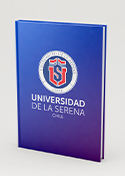Ciencias Naturales
Permanent URI for this community
Browse
Browsing Ciencias Naturales by Author "Arroyo-Polonio"
A MUSE/VLT spatially resolved study of the emission structure of Green Pea galaxies
(Edp Sciences, 2023-02-20) Arroyo-Polonio; J. Iglesias-Páramo; C. Kehrig; J. M. Vílchez; R. Amorín; I. Breda; E. Pérez-Montero; B. Pérez-Díaz; M. Hayes
Green Pea galaxies (GPs) present among the most intense starbursts known in the nearby Universe. These galaxies are regarded as local analogs of high-redshift galaxies, making them a benchmark in the understanding of the star formation processes and the galactic evolution in the early Universe. In this work, we performed an integral field spectroscopic (IFS) study for a set of 24 GPs to investigate the interplay between its ionized interstellar medium (ISM) and the massive star formation that these galaxies present. Observations were taken in the optical spectral range (λ4750 Å–λ9350 Å) with the MUSE spectrograph attached to the 8.2 m telescope VLT. Spatial extension criteria were employed to verify which GPs are spatially resolved in the MUSE data cubes. We created and analyzed maps of spatially distributed emission lines (at different stages of excitation), continuum emission, and properties of the ionized ISM (e.g., ionization structure indicators, physical-chemical conditions, dust extinction). We also took advantage of our IFS data to produce integrated spectra of selected galactic regions in order to study their physical-chemical conditions. Maps of relevant emission lines and emission line ratios show that higher-excitation gas is preferentially located in the center of the galaxy, where the starburst is present. The continuum maps, with an average angular extent of 4″, exhibit more complex structures than the emission line maps. However, the [O III]λ5007 Å emission line maps tend to extend beyond the continuum images (the average angular extent is 5.5″), indicating the presence of low surface brightness ionized gas in the outer parts of the galaxies. Hα/Hβ, [S II]/Hα, and [O I]/Hα maps trace low-extinction, optically thin regions. The line ratios [O III]/Hβ and [N II]/Hα span extensive ranges, with values varying from 0.5 dex to 0.9 dex and from −1.7 dex to −0.8 dex, respectively. Regarding the integrated spectra, the line ratios were fit to derive physical properties including the electron densities ne = 30 − 530 cm−3, and, in six GPs with a measurable [O III]λ4363 Å line, electron temperatures of Te = 11 500 K–15 500 K, so the direct method was applied in these objects to retrieve metallicities 12 + log(O/H)≃8. We found the presence of the high-ionizing nebular He IIλ4686 Å line in three GPs, where two of them present among the highest sSFR values (> 8 × 108 yr−1) in this sample. Non-Wolf-Rayet (WR) features are detected in these galaxy spectra.
